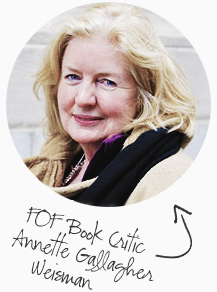
Annette Gallagher Weisman is an award-winning essayist and a longtime member of the National Book Critics Circle. Born and raised in Dublin, Ireland, she has written for numerous publications including the St. Petersburg Times, edibleASPEN, TheWineBuzz, Cincinnati Magazine, The Cincinnati Enquirer, Town & Country, People, and in the U.K. Vanity Fair and Over21. Annette received an MFA in writing and literature from Bennington College in Vermont.
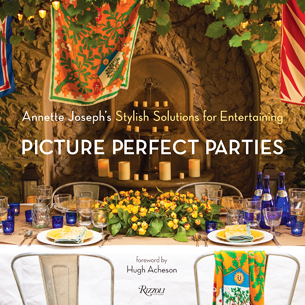
Picture Perfect Parties
by Annette Joseph
Rizzoli. 224 pp.
Does this sound familiar? You’ve invited friends to your home for a festive party; you’d thought it was a great idea, but now it’s just a week away and you’re fretting over what to cook and how to make it special. That’s when a TV stylist would come in handy. But how many of us can hire one of those?
Have I got a book for you! Annette Joseph, Today Show entertaining expert, has just come out with a cookbook with insider tips on how to throw fabulous parties with little effort. As she says, “Keep it gorgeous and keep it simple.”
Without spending a lot, Joseph can transform the ordinary into the extraordinary. For instance, she’ll ask you to hunt around the house for items like fabrics, candles and craft papers to help create magazine worthy “tablescapes.” Then she’ll show you how to build a total environment around a theme, including Cinco de Mayo, July 4th, and the Super Bowl. Joseph also has step-by-step sidebars with innovative ways to create memorable centerpieces as well as other ideas that make a party unique.
But wait! This is a cookbook after all. Inside are full menus for 16 parties including appetizing recipes for dishes such as Apple Cheddar Soufflés, White Bean Vegetable Farro Soup, Sun-Dried Tomato Grilled Flank Steak, Lemony Risotto, Mini Palovas with Strawberry Sauce and Pumpkin Bread Pudding.
And, each event has an “Elements” section that will keep you organized by listing everything you’ll need from serving pieces to platters. With Joseph’s help you’ll always be ready to par-tay!
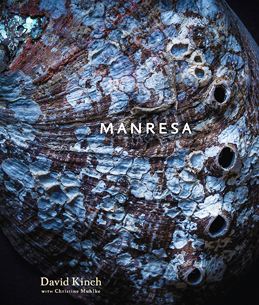
Manresa: An Edible Reflection
by David Kinch with Christine Muhlke
Ten Speed Press. 327 pp.
To quote poet John Keats “a thing of beauty is a joy forever.” That’s what Manresa is: a thing of beauty. This cookbook, named after the San Francisco Bay area restaurant, is simply gorgeous. The photographs by Eric Wolfinger depict ethereal portraits of vegetables and other exquisite objects d’art, such as oyster shells, that reflect a sense of the restaurant and its bountiful surroundings in Los Gatos. As well, there are some magnificent drawings of the locale by artist Tom Killion.
Kinch has been called the best chef in the world by a chef who is considered by many to be the best in the world, Ferran Adria of El Bulli fame. Renowned chef Eric Ripert describes in his foreword how he was “blown away” when he first dined at Manresa, praising Kinch’s dedication to his own personal style and his role as a pioneer of the Locavore and farm-to-table movement in America.
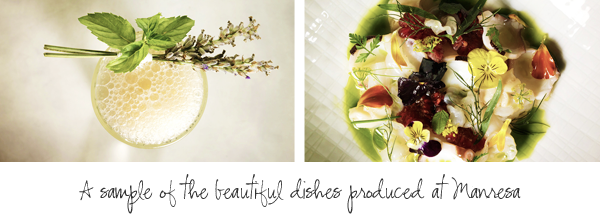
Love Apple Farms is another unique aspect of Manresa. By some alignment of the stars when Kinch was searching for the best produce from one local source, he met Cynthia Sandborg, who wanted to start a biodynamic farm for just one restaurant. This was a match made in heaven, or at least in the Santa Cruz foothills.
A reasonably good cook or at least an adventurous one will particularly enjoy this cookbook; someone who won’t keel over at terms like sous vide and may even own a few contemporary kitchen aids such as an immersion blender. Not that you have to cook every recipe or follow the directions exactly, some are too ambitious. But just by looking at the photographs, you’ll be inspired to cook more creatively such dishes as Creamy Nasturtium Rice With Passion Fruit And Crab, Corn Pudding And Lettuce Veloute, Crispy Mushrooms, and Pistachio Parfait With Cherry Pit Crumble And Cocoa Nibs.
Manresa is a perfect gift for those who appreciate the art of food, its regard for local sources, and the extraordinary lengths Kinch will go to create perfection. But whomever you give it to, maybe yourself, this cookbook is a joy forever.
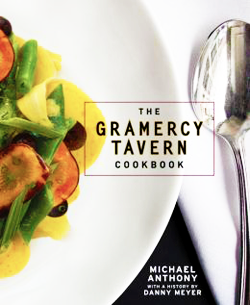
The Gramercy Tavern Cookbook
by Michael Anthony and Dorothy Kalins
Clarkson Potter. 350 pp.
Even if you don’t live in Manhattan, you’ve probably heard of The Gramercy Tavern, part of the Union Square Hospitality Group that includes the Union Square Café and Maialino. In “The Making of the Tavern” CEO Danny Meyer says that but for the fact that chef Tom Colicchio approached him with the idea of co-partnering a restaurant together, the tavern would never have happened. Colicchio was The Gramercy Tavern‘s executive chef when it opened in 1994. He went on to become a prominent restaurateur and, as any foodie knows, a judge on Bravo TV’s Top Chef. Due to another piece of synchronicity, Chef Michael Anthony stepped in after Colicchio left in 2006 and now is executive chef-partner. Last year, Anthony received the James Beard Award for “Best Chef: NYC.”
While Anthony feels home cooks can learn to cook intuitively as well as pick up some new techniques, he appreciates that they don’t have the benefit of many pairs of hands and a restaurant’s equipment. With that in mind, he’s modified his recipes to take no more than 20 to 40 minutes using just a couple of pans.
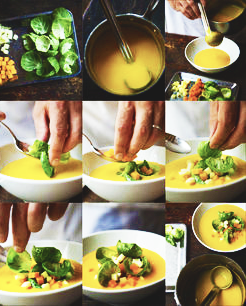
This cookbook takes you seasonally through a year of recipes. There are so many I want to try, like the Ruby Red Shrimp with White Beans and Kale Salsa Verde, the Slow-Roasted Pork Shoulder with Bacon Broth and Corn Bread, and the Rhubarb Streusel Tart with Strawberry Ice cream among many other tempting creations.
Every staff member is considered part of the Gramercy family, which dines together prior to lunch and dinner service at the restaurant. Many of the family members are featured in this book from the chief steward, to the barrista, to the captain of the dining room who also acts as a glass polisher! Gramercy Tavern has been a training ground for numerous chefs who’ve gone on to run their own kitchens including Nick Anderer, Chris Bradley and Geoff Lazlo.
Floral designer, Roberta Bendavid, has been a part of the Gramercy family since 1994. Her stunning arrangements play a major role in the restaurant’s ambience throughout each season, as shown in the superb photographs. Photographer Maura McEvoy has, as Anthony says, “an ability to reveal both the obvious beauty as well as the hidden character of GT.” Next time I’m in New York, I have to dine there.
Meanwhile, I’ll content myself with cooking from this wonderful book, an ideal gift for your favorite foodie and the kind that looks good on any surface, whether butcher block or mahogany.
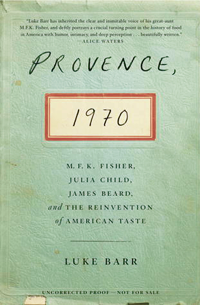
Provence, 1970
by Luke Barr
Clarkson Potter. 320 pp.
Soon after this memoir begins, Luke Barr says of his great aunt M.F.K. Fisher, “France had been her ideal for decades, and that was changing. She was changing. I know this because I found her diary.”
Barr was fortunate to have Fisher’s green notebook, several journals, plus a wealth of other information including access to her homes in Sonoma and Provence to draw upon. But the rest—his amazing ability to set a scene, to describe a place so evocatively one feels present not a mere voyeur, and to make the conversations between culinary icons, who found themselves in the hills above Provence at the same time, so interesting and true to life—for that, we, the readers of this book, are fortunate.
By that time—it was December 1970—Fisher was 62 years old and well established as a leading writer in the food world, a sensuous chronicler of both love and appetite.
“M.F. had opened a door to pleasure and literary consideration of everything from shellfish to freshly picked green beans to the pre-departure glass of champagne at the train station café, and Julia Child, James Beard, Judith Jones, and, later, Richard Olney, all walked through that door after her.” And here they were in Provence sharing numerous meals, discussing food trends, their books, their relationships, and gossiping about each other.
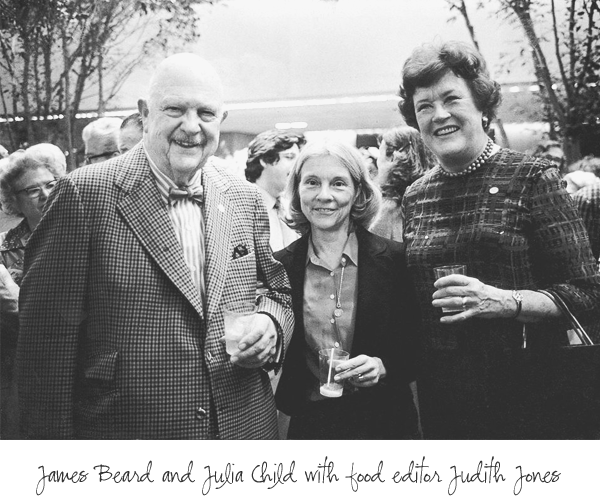
Olney was a snob and privately dismissive of Child’s and Beard’s latest books that were for him “without interest.” Both he and Simone Beck, who co-authored with Child both “Mastering” cookbooks, lived in the area, and considered the French way of cooking to be far superior to the American way. But American cuisine was broadening, if slowly. During this time Beck and Child ended their collaboration and would write their own books. “Now I don’t have to be so damned classic and ‘French’. To hell with that,” Child said to her editor, Jones.
This is a beguiling memoir that will make one reflect on how influential these culinary “top chefs” were, and how their social gatherings that December, were, in fact, a small slice of history: a turning point, where American cuisine was about to come into its own.

Alice Waters, a fan of both Olney and Fisher, invited Olney to dinner at her famous Restaurant Chez Panisse when he was on a book tour. She also held an extravagant party at the restaurant in 1978, to celebrate Fisher’s 70th birthday and publication of her latest book about Marseille “A Considerable Town.” It made sense that Waters, who, even back then was a leader and a pioneer in the culinary world, liked both of them. “Cooking was for Waters about more than food, it was a philosophy. The same had been true for M.F., and Olney, too.”
I’d like to tell you about all the spectacular meals in Barr’s memoir, but that would spoil the joy of discovering them for yourself. Provence in the 70s will be read again and again, knowing, that like a good movie, there’s always some tiny detail or exquisite moment one will have missed the time before. A definite must read for foodies.
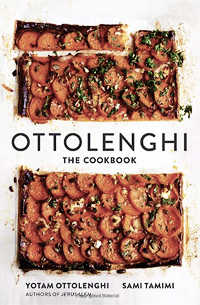
Ottolenghi: The Cookbook
by Yotam Ottolenghi and Sami Tamimi
Ten Speed Press. 304 pp.
Ottolenghi, isn’t a word that trips off the tongue, but if you are not already familiar with it, you soon will be. It’s the last name of a London chef/restaurateur who along with his head chef/partner, Sami Tamimi wrote this fabulous cookbook. Yotam Ottolenghi owns three restaurants in London named Ottolenghi, each one incorporating a patisserie, deli, and bakery. He also owns Nopi, a more upscale restaurant north of Piccadilly Circus.
Yotam and Sami met in London, yet both grew up just a few miles from each other in Jerusalem—Yotam from the Israeli side and Sami from the Palestinian. Included in Ottolenghi are dishes from their childhoods as well as from a diverse number of places they’ve spent time in along the way, resulting in a cuisine that can loosely be described as Mediterranean. The result is vibrant, colorful and flavorful cooking using many spices; there is nothing dull or bland about it. Lovers of lemon and garlic will be ecstatic.
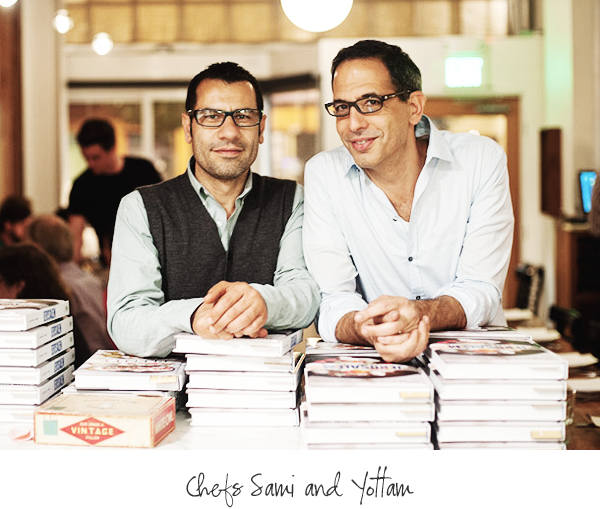
As the 115 full page photographs show, all 140 dishes look so appealing and attractive you want to put on an apron right away. Some of my favorites are Buttered prawns with tomato, olives and Arak, and Harissa-marinated chicken with red grapefruit salad.
The cookbook is divided into several sections, such as vegetables, legumes and grains, meat, fish, etc. It also features the breads, cakes, cookies and tarts Ottolenghi is known for. The book has a hard cover that is slightly padded giving the impression that it is hardy and wipeable. If so, it’s a good idea, because you’ll use it a lot.
Ottolenghi has published two previous cookbooks, the award-winning Jerusalem which I bought last year and Plenty, which I plan to purchase. I suspect once you buy Ottolenghi, you’ll want the other two books also!
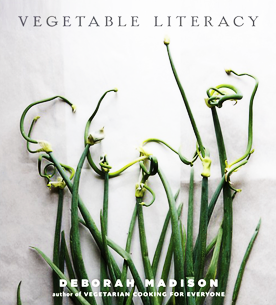
Vegetable Literacy
by Deborah Madison
Did you know that absinthe, artichokes and asters are part of the sunflower family? I didn’t. And have you noticed that a strange vocabulary is creeping into menus these days such as burdock, cardoon, salsify and scorzonera? It wasn’t that long ago that radicchio, rocket and chard would make one go, “Huh?” But the times they are a-changing when it comes to eating plants and vegetables. And we are the lucky benefactors of this increasingly healthy trend.
If you want to learn more about vegetables, read Vegetable Literacy by Deborah Madison and you will be vegetable literate by the time you finish it – not that it’s a chore. On the contrary, this huge volume describes in fascinating detail seemingly everything there is to know about plants.
This is the 11th book for Madison, who introduced us back in 1997 to her groundbreaking Vegetarian Cooking for Everyone and was the chef at San Francisco’s Greens restaurant in the early 80’s. She took up gardening to prepare her for this latest tome which may be her crowning achievement: a vast array of knowledge acquired over three decades.

There are twelve chapters in this cookbook each devoted to a particular “family” such as The Goosefoot and Amaranth Families. That’s edible weeds, leaves and seeds to you and me. But don’t be taken aback by the odd or strange, there are plenty of familiar sounding vegetables and herbs, too, as well as many more that home cooks will want to explore.
What is new in vegetarian cooking is that we now realize that all members of a “family” will go well together, which we may not have considered before. For instance cumin, caraway and chervil are part of the same family as carrots. And of course, they’re the perfect seasoning for carrots.
In addition to anecdotes and the history of each plant, Madison gives us over 300 recipes with beautiful color photographs. Each one looks tasty and easy to make such as Summer Squash Tartines with Rosemary and Lemon, Sweet Potato flan with Maple Yogurt and Caramel Pecans, Roasted Eggplant Salad with Tomatoes and Capers, and Chive and Saffron Crepes.
Vegetable Literacy is a must have for vegetarians. But it’s also a marvelous reference/cookbook for professional chefs, home cooks, gardeners and those who, like Madison, have a passion for botany.

Mastering the Art of Soviet Cooking
by Anya von Bremzen
Crown Publishing. 340 pp.
For many of us, borscht, blinis, and caviar were long the extent of our knowledge of Russian food. Von Bremzen showed us how ignorant this perception was with her first cookbook Please to the Table: The Russian Cookbook, which contained a whopping 650 pages, 450 of which were recipes from her Rodina (Homeland) and which won a James Beard Award for Best International Cookbook.
Now she’s here with Mastering the Art of Soviet Cooking, a title which seems like something of an oxymoron. The art of Soviet cooking? Wasn’t it all just breadlines and potatoes? But food is the glue that binds the history of von Bremzen’s family to the history of Russia. From czarist times through the Soviet Union to a greatly changed Russia under Putin, von Bremzen regales us in this memoir with fascinating facts about both food and the Soviet Union’s former leaders, including Lenin, Brezhnev and Gorbachev. We also learn what it was like for her family to live under those regimes and how food and the lack of it affected their lives. “Inevitably, a story about Soviet food is a chronicle of longing, of unrequited desire,” von Bremsen writes. “What happens when some of your most intense culinary memories involve food you hadn’t actually tasted? Memories of imaginings, of received histories; feverish collective yearning produced by 70 years of geopolitical isolation and scarcity.”
Among other things we learn that Stalin’s protégé, Mikoyan, “inspired by his 1936 trip to the US wanted to copy Yankee burgers in Russia.” A narcom (people’s commissar) of the food industry he sponsored a totalitarian version of The Joy of Cooking called The Book of Tasty and Healthy Food. Khrushchev, who was “enthralled by a visiting Iowa farmer in 1955, had introduced corn as the magic crop that would feed Russia’s cattle.” But despite the fact that corn was considered a tasteless food fit just for cattle, “It was forced down human throats too.” Later, Gorbachev tried to ban vodka of all things. Holy moly! No wonder he couldn’t sustain his popularity.
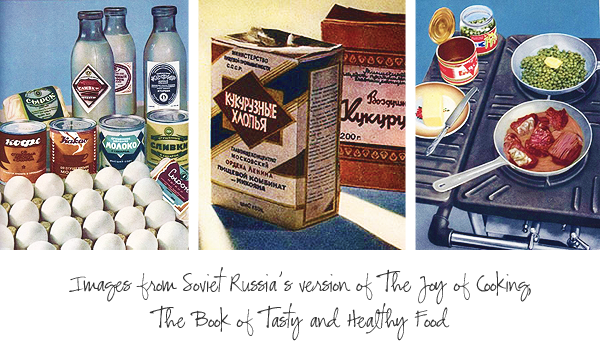
In addition to the many foods mentioned throughout the book, there are ten recipes in the back of the book for some artful Soviet dishes, including one for Salat Olivier, a potato salad with pickles, and the classic Russian fish pie, Kulebiaka, mentioned in some of the country’s great nineteenth century novels and still often eaten on Sundays or served on celebratory occasions.
Von Bremzen’s family background is filled with rich, colorful characters. And although the book may seem somewhat pedagogical at first, by the time Anya and her mother emigrate to the U.S. in 1974, it is sheer pleasure, for one of the joys of reading an author with the descriptive powers Von Bremzen possesses is that her brilliant writing both entertains and informs.
Aside from foodies and history buffs, I’m sure anyone with a Russian heritage would especially love this book. Still, it might be best to read it after the holidays, when there’s time to put one’s feet up and savor it.

Entertaining in Grand Style: Savoir Faire of a Parisian Chef
by Chef James Viaene
Flammarian. 194 pp.
Entertaining in Grand Style begs to be laid on a coffee table. This elegant cookbook is filled with sublime meals literally fit for a Queen—Elizabeth that is. From feasts to afternoon tea, we are treated to recipes that Chef James Viaene served to the royals as well as to other members of high society for over the past fifty years.
Viaene was born in France in 1937, and at age 17 began his career in the French Embassy in London. He honed his craft in the grand homes of France’s elite including those of patrons of the arts such as Michel and Helene David-Weill and Argentinian racehorse owner Jean de Souza Lage.
In 1970 he became chef at the British Ambassador’s residence in Paris and remained there for the next 40 years. You can imagine what stories he has to tell! He also shares with readers his knowledgeable views on past and present culinary trends. Viaene has won many prestigious awards including the French Legion d’honneur and is a Member of the Most Excellent Order of the British Empire (MBE).
There’s so much to take note of in this elegant book. The photographs by renowned lifestyle photographer Francis Hammond include exquisite table settings in sumptuous surroundings. You might even pick up some tips; I noted at least three different ways to fold napkins. Of course, you have to try some of the 24 recipes too. How about Lobster Mousse, or Fillet of Beef with Perigord Truffle, or Sorbet Belle Bernadette, a favorite dessert of Madame Bernadette Chirac (wife of French President Jacques Chirac); or Christmas Pudding, a modification of the recipe served to the Duke and Duchess of Windsor?
Entertaining in Grand Style is the perfect gift for the friend who has everything and may not even like to cook, but who can enjoy vicariously, as I did, extravagant dinners and other gourmet events just by looking through the book’s gold bordered pages.
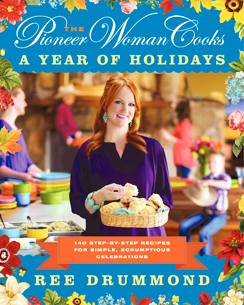
Pioneer Woman Cooks A Year of Holidays
by Ree Drummond
Harper Collins. 400 pp.
And now for something completely different in the sense that A Year of Holidays is the best book out this year by a home cook. This attractive “Pioneer Woman” is so popular she comes across as everyone’s best friend. But then, Ree Drummond conveys exactly that with her effervescent personality and gratitude to those who’ve read her famous Pioneer Woman Blog, her cookbooks (7 to date) and attended her personal appearances. Her commitment to her fans is akin to that of singer/songwriter Taylor Swift, speaking openly through her writing about her feelings and always paying tribute to those who made her such a phenomenal best-selling success.
Drummond cooks the kind of dishes that warm your heart. But unlike the offerings in cookbooks devoted to the chic and worldly, you won’t find among her recipes a tiered skyscraper of food centered on a stark plate with a drizzle of coulis smeared like art around the sides. What you will find instead are dishes with homey names like Spicy Whiskey Barbeque Sliders, Broccoli-wild Casserole, Peach Cobbler and Boozy Bread Pudding. All 140 recipes look yummy.
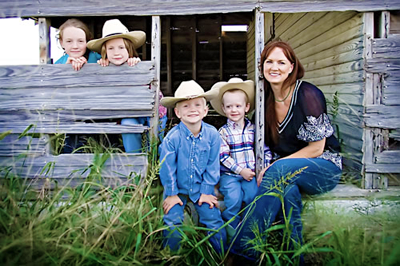
You’d think that writing, cooking, being a mother of four on a working farm in Oklahoma plus having her own TV show on the Food Network would keep her busy, but Drummond is also a photographer. Along with photographs of her recipes, there are family photos throughout this cookbook book too. Casual images of her four children at home; her chaps-wearing handsome husband; her father-in-law in a cowboy hat looking just like a Western movie star; and other family members—not to mention both household and farm animals—all add to the impression that Drummond loves life. And, that cooking for her translates into an overabundance of joy she wants to share with everyone. Or maybe it’s a combination of fact and smart marketing. Either way, it’s contagious.
A Year of Holidays covers twelve of them, including Thanksgiving, Christmas and New Year’s, so this cookbook is timely. It’s an especially good choice for someone who is a beginner or a moderately good cook, as each recipe has step by step photos which make the instructions clear and easy to follow.
Drummond says she likes to sing along to her favorite bands as she cooks. Maybe next time we’re in the kitchen we should give it a try: spread a little of that joy around. All together now…
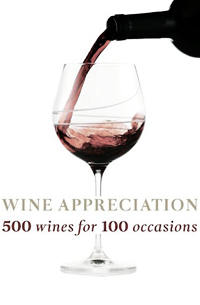
Wine Appreciation:
500 Wines for 100 Occasions
by David Williams
Universe Publishing 2013. 256 pp.
I think most readers would agree that any good meal is enhanced by wine. And while those of us who dine out frequently know a thing or two about ordering wine in a restaurant, we are often stuck like a deer in headlights in a wine store. We ask ourselves questions like “That Pinot is more expensive than this one. Is it that much better? I really don’t want to splurge if it isn’t.”
We may have a knowledgeable assistant to aid us in the store, but what if we don’t? “Who ya gonna call?”
David Williams’ new book, Wine Appreciation, is the solution. Williams, who is deputy editor of The World of Fine Wines and the wine columnist for The Observer acts as our personal sommelier by selecting for us the perfect wine along with four additional choices for 100 different occasions. The wines are readily available and coded $5-10, dollars $$10-20 and so on. You don’t have to wade through a lot of “winespeak” either.
This book is more of a “learn as you go” education, not one you have to study. Williams discusses the type of occasion he’s selecting wine for on one side of a page and on the opposite page his five choices along with their labels and a brief description. He also provides a short guide at the back on how to buy, store and serve wine.
Aside from special birthdays from a 21st to 100th, significant anniversaries and holidays, Williams lists a whole slew of occasions you may want advice on choosing wine for including: Impressing your boss; The unexpected guest; A girls’ night at home; Making that big decision; or A bad day at the office. Whatever the occasion, Williams has you covered.
His attitude towards buying wine is not based on the 100 point system either. As he says, “Context is everything…Who you are with, what you’re eating, where you are; the mood, the time of year, the weather; the money in your pocket, the scale and kind of occasion, the many trivial things that happen on a given day…” I especially like Williams’ sentiment that “What I try to do is provide a little fun, a little inspiration, and to fit wine a little more closely to life, in all its messy glory.”
As Galileo said, “Wine is sunlight held together by water.” We could all use a little more sunlight, especially in these winter months.

0 Responses to “{FOF Book Critic} Top 10 Food Reads of 2013”
victoria Daly says:
Enjoyed these reviews! I will be ordering several — her descriptions are upbeat, providing much information in a succinct manner with a dash of humor, it is easy to understand the exact nature and personality of each of these books and their authors!